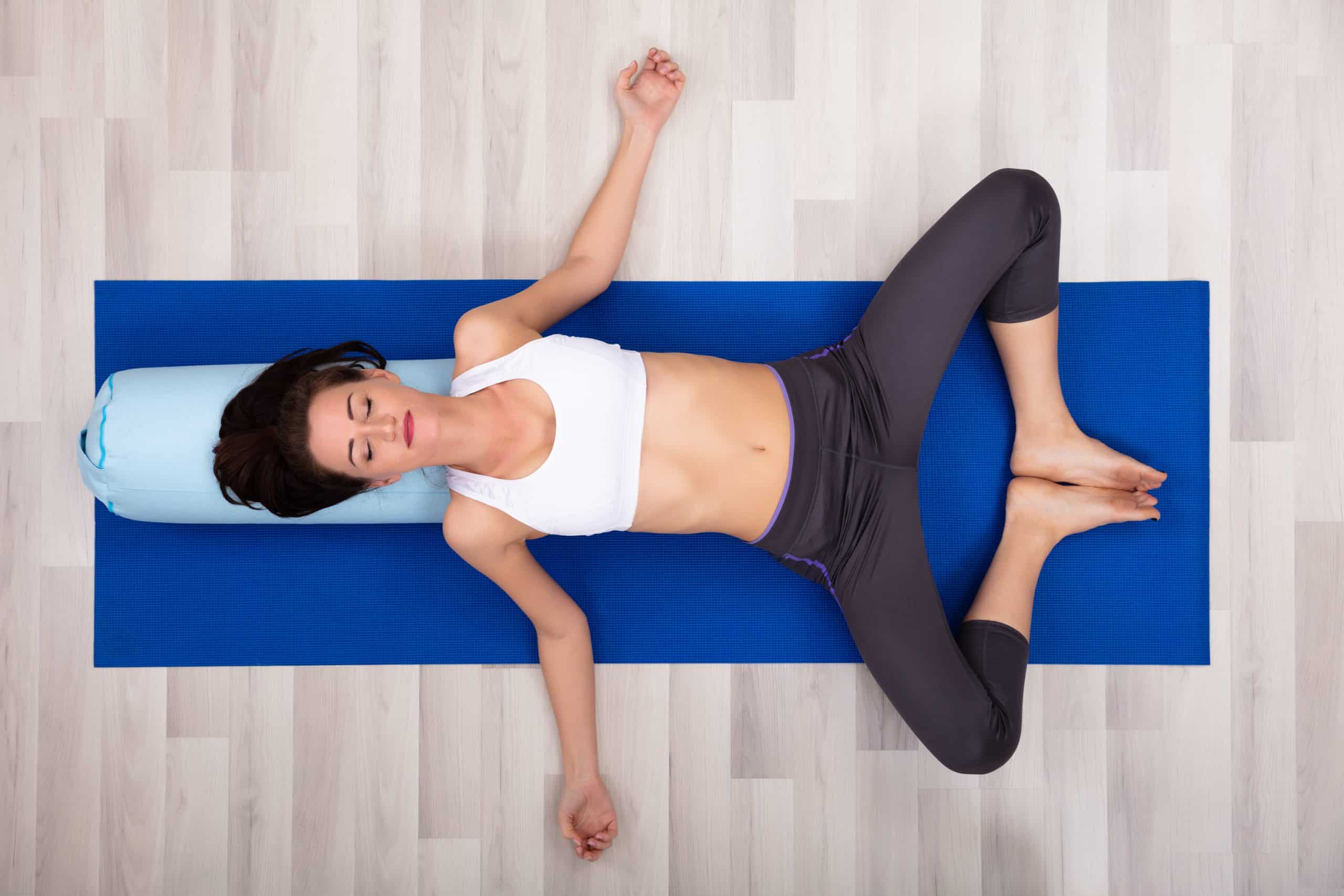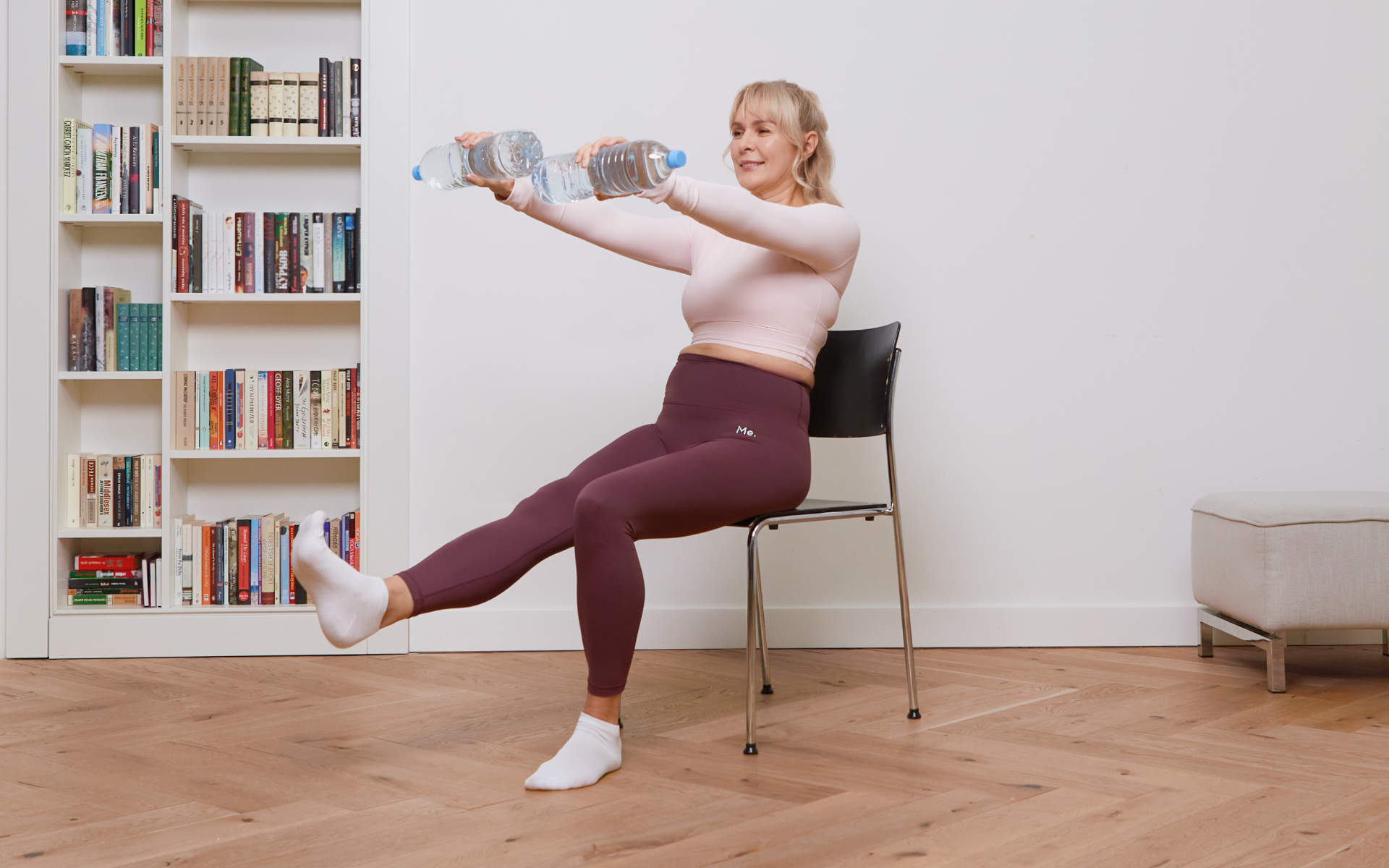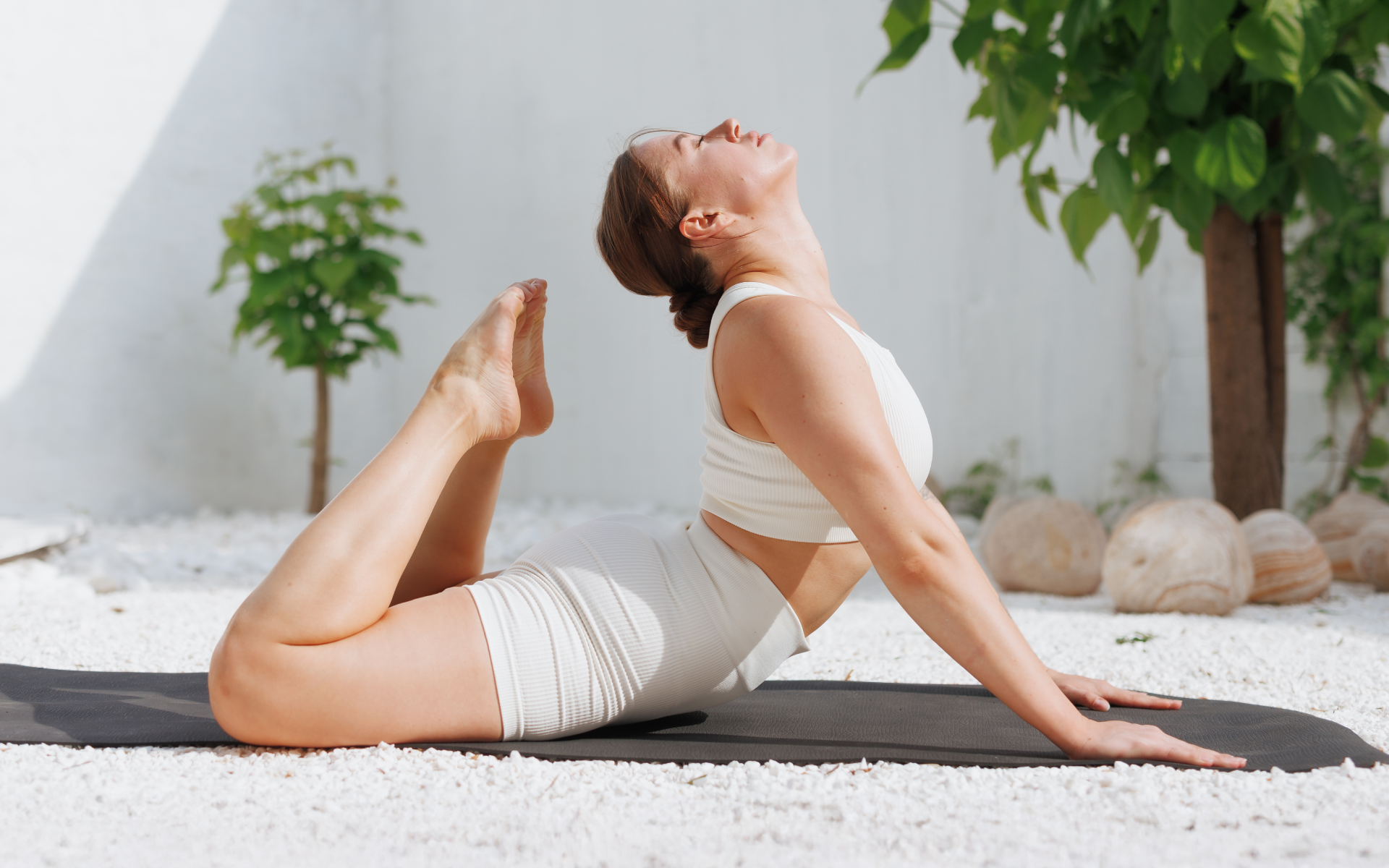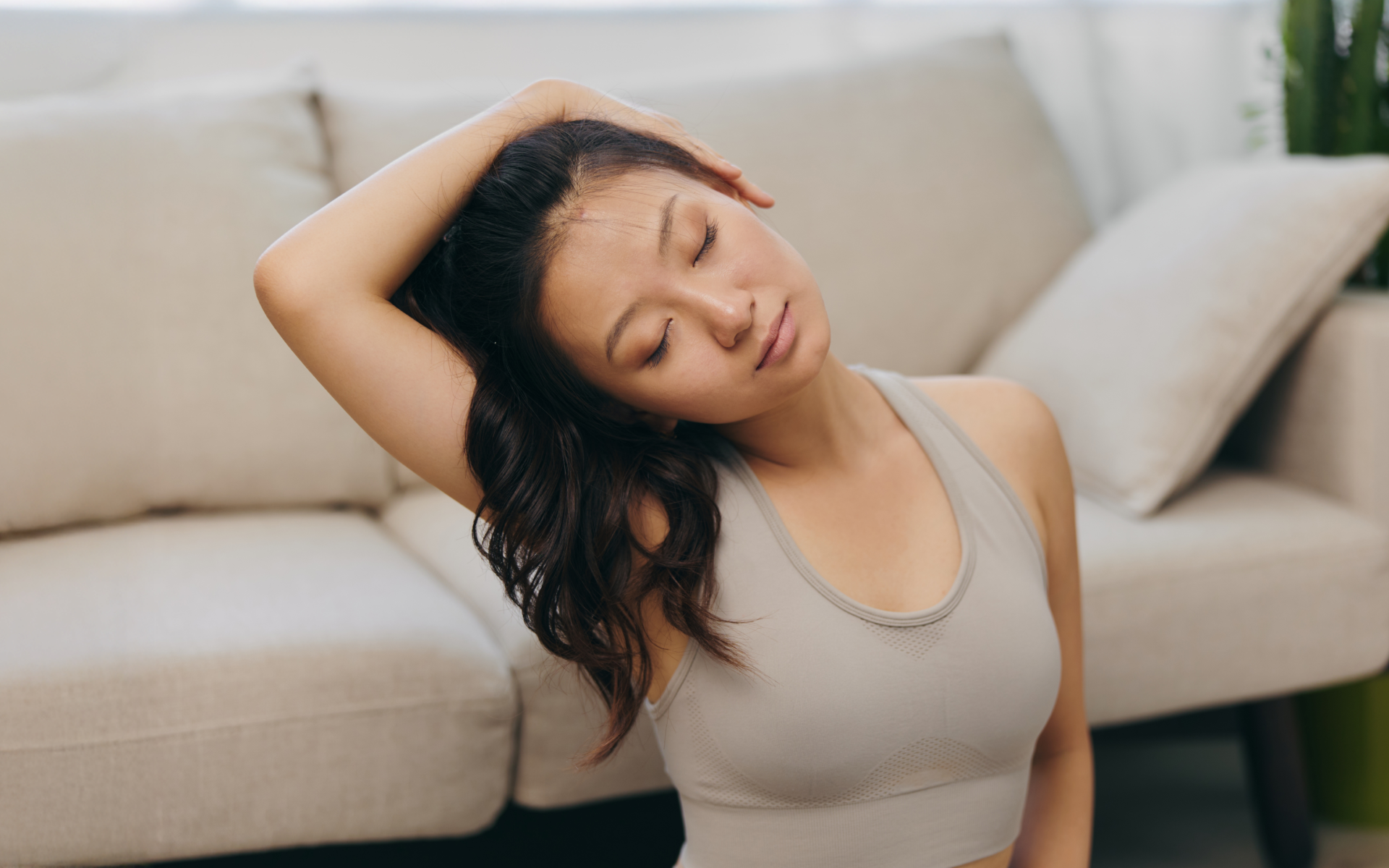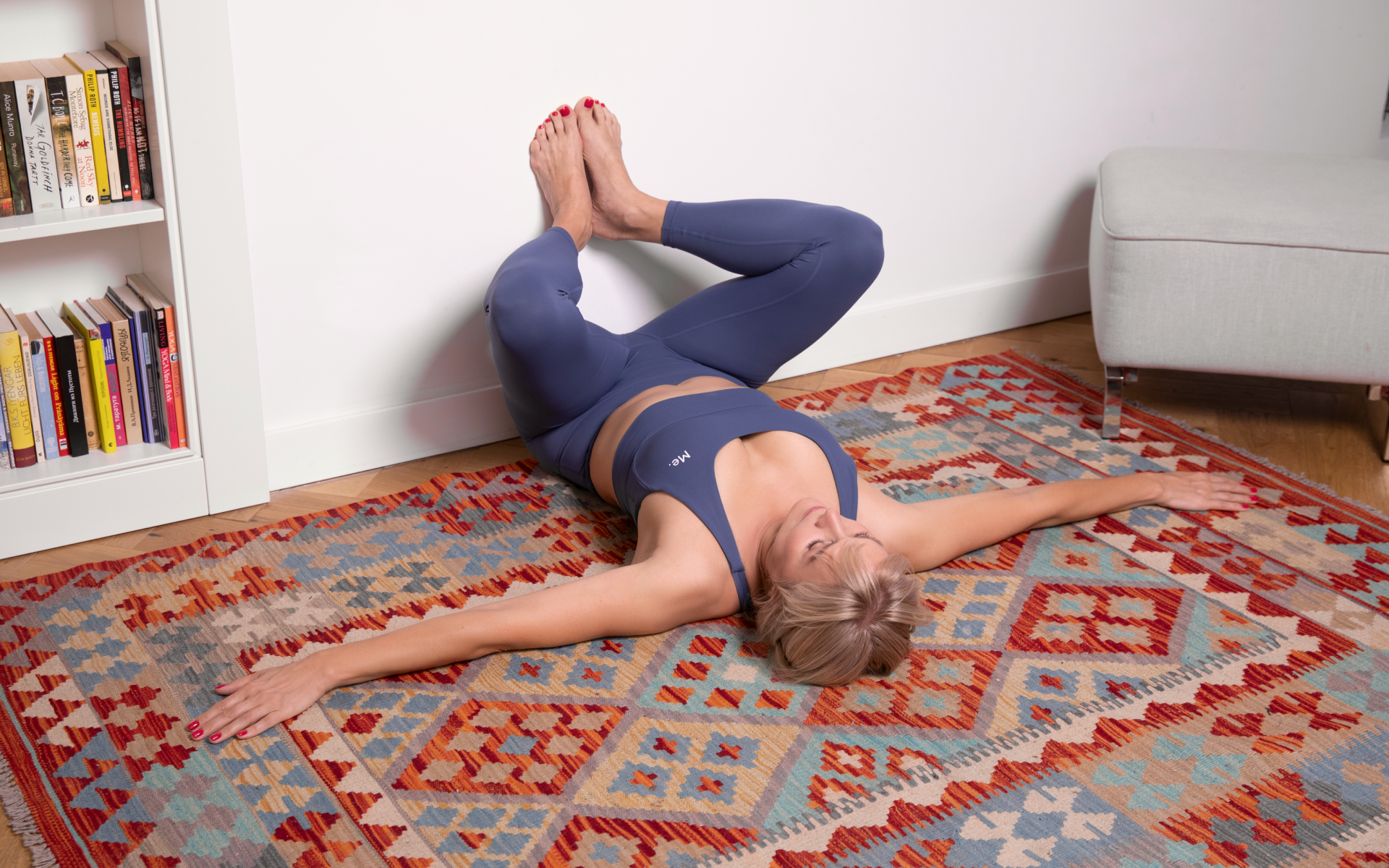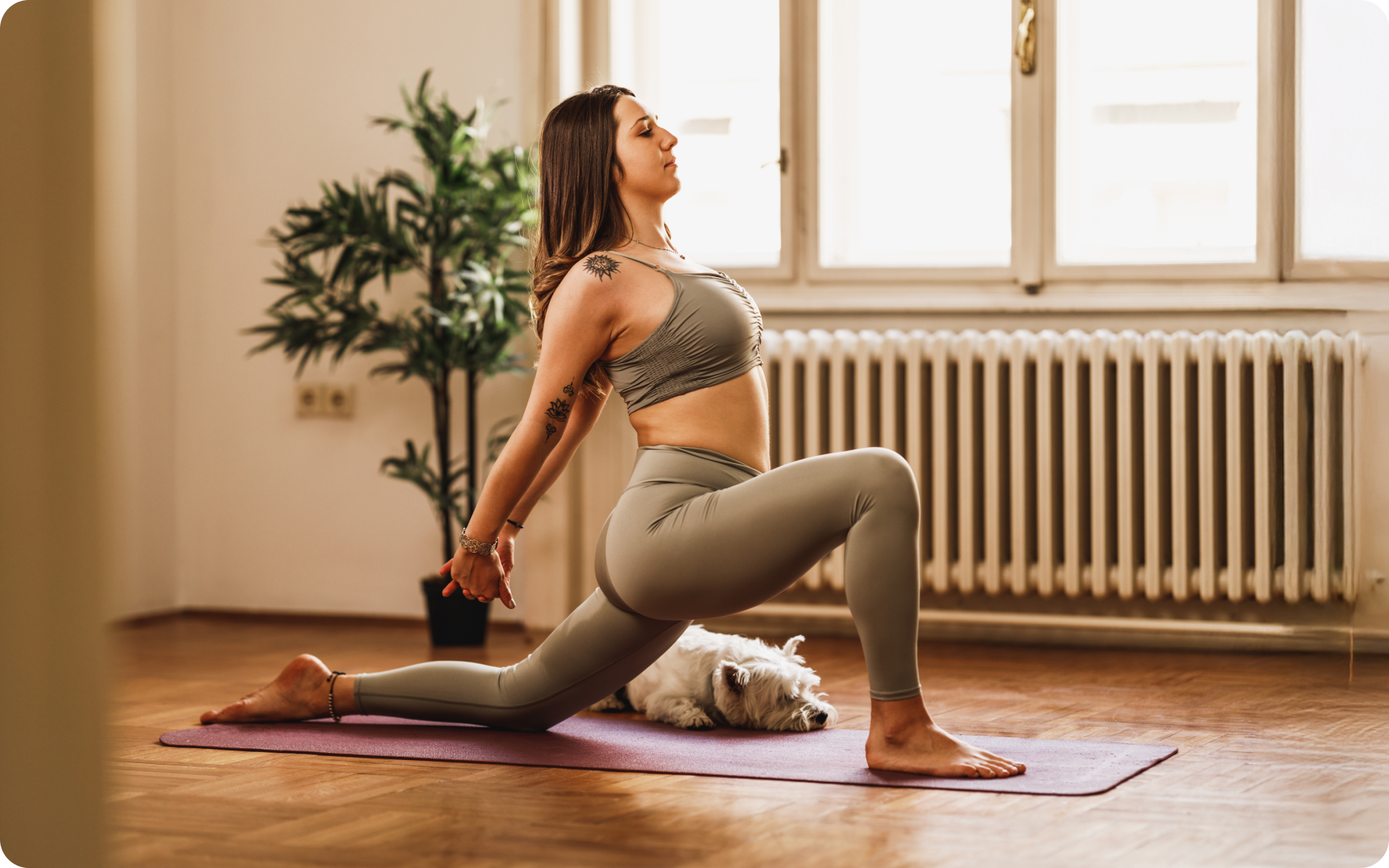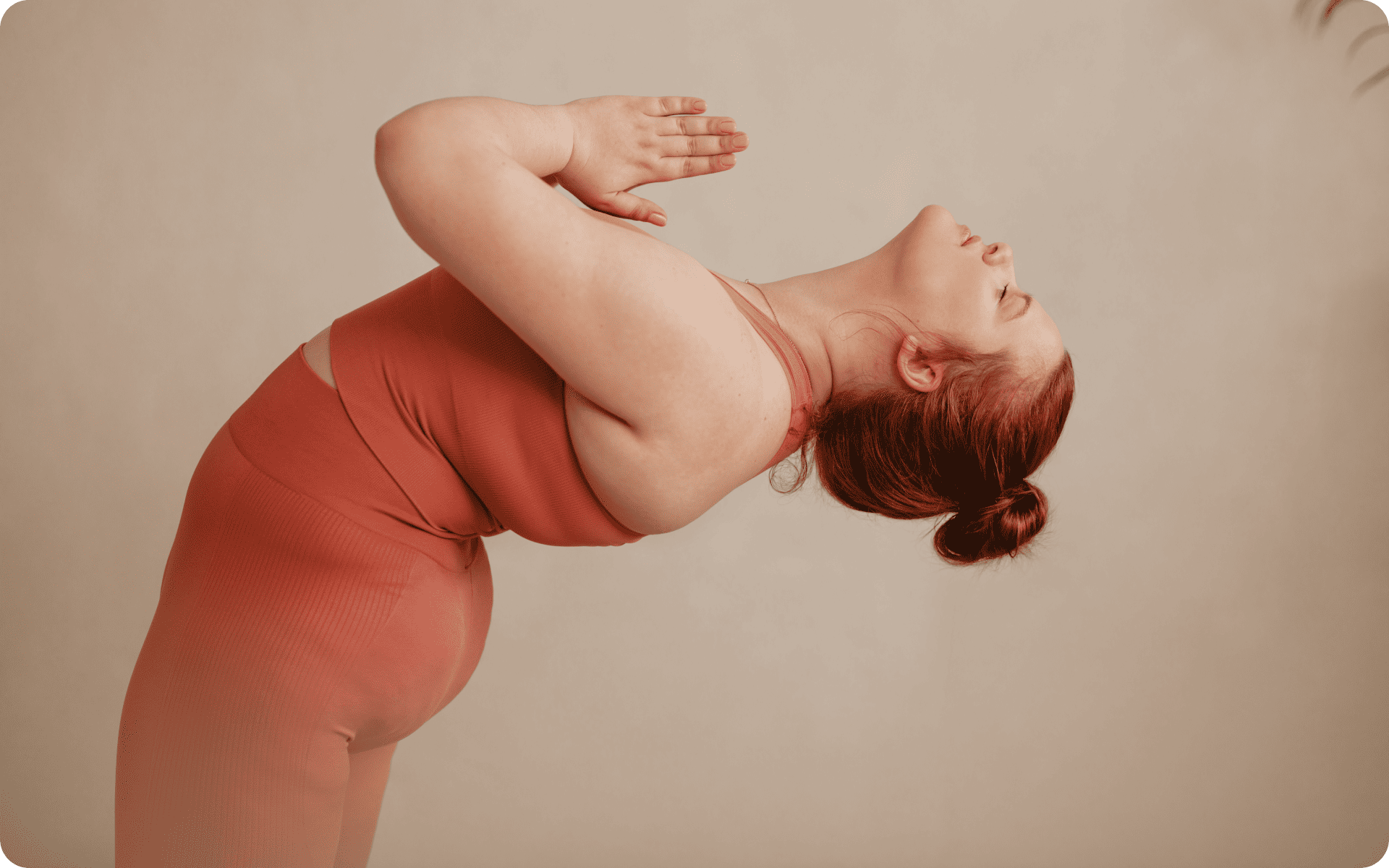What we commonly call yoga is a combination of mental and physical exercises. It involves a variety of physical movements with various standing, seated, and reclining poses that need to be held for a certain amount of time. These help build physical strength and flexibility and promote mental well-being and calmness (2).
There are different styles of yoga that vary in their poses, methods, and results. Among these types of yoga, there is a slow-paced, passive yoga style that is known as Yin Yoga.
Unlike other flow styles of yoga like Vinyasa, where stretches need to berelax held for 3 to 5 breaths, the postures in Yin Yoga are typically held for 3 to 10 minutes. This is derived from the traditional Hatha Yoga done for meditation purposes and accounts for one of the few similarities between the two in the debate of Yin Yoga vs. Hatha Yoga (7).
What Are the Benefits of Yin Yoga?
Yin Yoga is based on the ancient Chinese Taoist philosophy of energy flowing through our body through various channels, also known as meridians. Yin Yoga brings many physical and mental health benefits to practitioners of all levels (8).
Holding postures for long durations can lengthen the connective tissues in the muscles and make them more elastic. This also increases the overall flexibility of the body and releases tension held deep within tissues. Moreover, more oxygen is brought into the body due to deeper breathing as positions are held for several minutes. Hence, the blood flow and circulation become faster (8).
Yin Yoga can relax the mind for mental well-being, eventually reducing stress and anxiety. By practicing Yin Yoga regularly individuals establish balance and coordination between body and mind. A sense of calmness may prevail over one’s body, and the mind starts to feel more at peace. As a result, there may be a reduction in the symptoms of many common psychological disorders like stress, anxiety, depression, and sleep disturbances (4).
Want to build an attention-grabbing bubble butt, blast away fat that’s stored in all the wrong places, spring-clean your diet, turn back the clock on your skin, skyrocket your self-confidence and shatter your insecurities? Check out the BetterMe app and set this plan in motion!
What Is the Yin Yoga Format?
The basic format of Yin Yoga involves long-held, passive seated and reclining poses that primarily focus on the lower body. It includes the hips, pelvis, inner thighs and lower spine (9). However, several positions like the Child’s pose and Spinal Twists can also provide relief to the back and shoulders. All Yin Yoga poses and stretches should be done comfortably, and in case of any sensations of pain, individuals should immediately stop and gently come out of the pose to check what was done wrong. Yoga props such as blankets, blocks, straps, and bolsters are great tools to help postures feel more comfortable and accessible.
The proper Yin Yoga format involves preparing the body step by step to achieve optimal outcomes. After getting into the posture, relax your body, especially the muscles which are targeted from the stretches. Bringing your attention to your breath, scanning your body for sensations, and intentionally releasing tension with each exhale is one of the best ways to relax into a Yin posture.
Once you have entered a certain pose or stretch, stay still and maintain it for 3 to 7 minutes, but it’s important to ensure that the position does not become too intense for your body. Moreover, do every step slowly and mindfully with care (6). One of the best things you can do for your personal Yin Yoga practice is to focus on how postures feel versus how they look.
How Do You Sequence Yin Yoga?
Though it is always beneficial to practice Yin Yoga regularly, try to follow a proper Yin Yoga sequence that aligns with your desired goals. Also, avoid overexerting yourself suddenly in the beginning of your practice since your body will be cool. Start practicing Yin by crafting a full-body Yin Yoga sequence that suits you and your body so you can fully enjoy the physical and mental benefits of Yin Yoga.
No hard and fast rules exist for creating a proper balanced Yin Yoga sequence. Just remember to be careful about a few pointers and check with your doctor to see if Yin Yoga is an appropriate exercise for you. If you are brand new to practicing Yin, it is also recommended that you find a local yoga instructor who is certified in Yin to help you begin your journey. Your instructor will guide you in and out of postures with proper alignment so you avoid potential injuries or overstretching. They will also be able to recommend yoga props and how to position them in ways that allow Yin poses to feel accessible to you.
Without exception, as mentioned earlier, do not push your body too much because this is where injuries can occur. Recognize that this practice is a beginning – it is a new change for your body so give it time to adjust and gently ease in and out of postures. When doing Yin poses and stretches you will most likely feel discomfort at a certain point as you hold the position for several minutes: this is commonly referred to as your personal edge. It is essential that you do not exert your body beyond this point as injury can easily occur past your personal edge. As always, trust your instincts – if something does not feel right, gently back out of the posture to realign or stop completely.
See to it that the duration of your Yin Yoga sequence is not too short or too long. Someone who is just getting started with Yin Yoga might start with a 20- to 45-minute Yin Yoga sequence, and after some time, when the body has adjusted well to all the movements, they can gradually move a step up to either a 60- or 75-minute yin yoga sequence (1).
Beyond this, decide on a goal to achieve through yoga and then move on to deciding on stretches and poses to do. For example, if your goal is to foster flexibility in your hips, focus on a sequence with a variety of hip opening postures such as Child’s pose, Dragonfly, and Butterfly. Ensuring there are an equal number of forward folds and reclining poses can create the feel of an energetically balanced class. Be sure the time for the left and right sides are balanced as well – a simple yoga rule is whatever you do on one side make sure to do it on the other. Another great option for a Yin Yoga sequence is to begin your practice with gentler poses and then slowly increase the intensity as the practice goes on. Each Yin sequence should end with a couple of minutes in final relaxation, commonly known as Savasana. Ending in a Corpse pose with a bolster placed under your knees and a blanket beneath your head is a very relaxing way to finish any Yin sequence.
Each individual’s Yin Yoga sequence will vary, depending on their lifestyle and desired goals. A sequence designed to release stress would differ from one that is designed for strengthening and flexibility of the legs and hips.
Read more: Yoga for Moms Who Need a Break: A Simple Guide
How Many Poses Should Go In A Yin Class?
A Yin Yoga class is designed to be gentle and relaxing. It is recommended to maintain the duration of the class such that students of all levels are well accommodated. A Yin Yoga 60-minute sequence class is best for such circumstances.
If you’re leading a Yin class, it is best to prepare for the class beforehand. Decide on a theme or goal for the class based on feedback from students before the class. If you know the people you’re practicing with, one idea is to share the 1-hour Yin Yoga sequence in pdf form or hardcopy with the students to let them mentally prepare themselves prior to class..
Within the yoga class make sure to begin the session by starting in a seated or reclining position. This allows all practitioners to settle in, connect with their breath, and set an intention for their practice. You can then move into the Yin sequence, holding all the poses for at least 3 to 5 minutes. With this sequence, you can expect to practice around 5 to 7 poses in a 60-minute yoga class. Taking a moment to pause in a neutral position between each pose gives your body the space to allow the sensations of the prior pose to move through the body. End the practice with 7 minutes of final relaxation.
When it comes to weight loss, progress is made by inches, not miles, so it’s much harder to track and a lot easier to give up. BetterMe app is your personal trainer, nutritionist and support system all in one. Start using our app to stay on track and hold yourself accountable!
How Do You Theme A Yin Yoga Class?
Yin Yoga can be discomforting at times. So, it is always better to theme a sequence in order to motivate the students throughout their practice. This can be done in multiple ways according to the interests of the participants and the teacher.
One idea is to share and discuss yogic philosophy with the students. Many ancient philosophical texts like the Yoga Sutras of Patanjali are great resources to help you theme a class around yoga philosophy such as the 8 Limbs of Yoga. Reading a part of a text or Sutra discussing their multiple translations and how they apply to our lives is an engaging way to teach students more about the Spiritual practice of Yoga – not just physical practice..
An additional way to theme Yin Yoga classes is physically. This means you’d choose a part of the body you’d like to focus on throughout the practice. The goal would be to address this part of the body in the various postures to bring students’ awareness to the variety of sensations they feel as they practice. You could also tell the students about the energy channels or meridians found in our body and those involved in Yin Yoga or how they’re affected in each posture. Discussing how connective tissues are lengthened in each pose of the Yin Yoga sequence is also an option as a theme. Incorporating yogic breathing exercises, commonly known as Pranayama, and meditation can also be done to enhance the experience of the Yin Yoga class.
Read more: Somatic Yoga: A Journey to Self Discovery
FAQs
What are the 5 dimensions of Yin Yoga?
Yin Yoga, a slow-paced yoga, is said to work with the yin energy flowing through our body. The five dimensions that it is known to work in are physical, energetic, emotional, mental, and spiritual. Doing Yin Yoga regularly provides benefits in all these five aspects.
How is Yin Yoga different from Vinyasa?
The main difference between Vinyasa and Yin Yoga is that Vinyasa is more of an active and energetic yoga style. Meanwhile, Yin Yoga is a passive style of yoga that requires you to hold poses for longer amounts of time.
Vinyasa has its poses linked to each other and the breath, and they are of comparatively shorter durations, to be done in a flow-like manner. The poses challenge the body’s major muscle groups like the Glutes and Quads, while Yin Yoga focuses on lengthening the joints and connective tissues. However, both styles of yoga are beneficial, serve different purposes, and are paired well together. For example, doing a Vinyasa one day a week and Yin once a week is a great way to create a sense of balance in your exercise routines.
What are the five elements of Yin Yoga?
As mentioned earlier, Yin Yoga works on the yin or qi, also called chi, energy flowing through different channels or meridians in our body.
Each posture works with one of the five commonly known elements. These are water, wood, fire, metal and earth. They are supposed to be controlling and supporting different meridians and emotions. Water is associated with the organs, kidneys, and bladder, and wood with the gallbladder and liver. Metal correlates with the lungs and large intestines, while fire correlates with the small intestines and heart. Lastly, the earth supports the spleen and stomach (3).
What are the 5 archetypes of Yin Yoga?
In Yin Yoga, there are numerous poses and stretches for different purposes. However, these poses are said to be driven by any of the five main archetypes. These key archetypes are the Shoelace, Saddle, Caterpillar, Dragonfly, and Twists. All of these archetypes target different muscular and skeletal groups in the body.
Shoelace targets the gluteus muscle group; Saddle targets quads and hip flexors; Caterpillar targets the spine and hamstrings; for Dragonfly, the target area is the groin; and for Twists, it is the spine and the lateral body (5).
The Bottom Line
Yin Yoga is a style of yoga that is relatively slow-paced and more of a passive style of yoga when compared to Vinyasa Yoga. It involves holding poses for a longer duration, about 5 to 10 minutes. Not only does it serve as a powerful exercise but it also brings about a lot of physical and mental benefits.
Physically, Yin Yoga increases strength and flexibility. It also improves blood circulation in our body. More oxygen is transported to muscles, and the connective tissues are lengthened. Mentally, it relaxes the mind and reduces the symptoms of many common psychological disorders such as stress and anxiety. An intentional connection is established between the mind and body whenever you practice a Yin Yoga sequence.
Forming a Yin Yoga sequence that you can follow is recommended. Decide on your goal or theme for the class and the amount of time you’d like to practice. Create a list of 3-7 postures that align with your class theme. Start with gentle poses at the beginning of each practice and slowly increase their intensity. Over time, try to hold each pose for longer durations. End every Yin practice with a couple of minutes in final relaxation to feel grounded, centered, and relaxed.
DISCLAIMER:
This article is intended for general informational purposes only and does not serve to address individual circumstances. It is not a substitute for professional advice or help and should not be relied on for making any kind of decision-making. Any action taken as a direct or indirect result of the information in this article is entirely at your own risk and is your sole responsibility.
BetterMe, its content staff, and its medical advisors accept no responsibility for inaccuracies, errors, misstatements, inconsistencies, or omissions and specifically disclaim any liability, loss or risk, personal, professional or otherwise, which may be incurred as a consequence, directly or indirectly, of the use and/or application of any content.
You should always seek the advice of your physician or other qualified health provider with any questions you may have regarding a medical condition or your specific situation. Never disregard professional medical advice or delay seeking it because of BetterMe content. If you suspect or think you may have a medical emergency, call your doctor.
SOURCES
- 4 Yin Yoga Sequences & How to Sequence Yin Yoga Practices (2022, arhantayoga.org)
- How does yoga work? (2023, medicalnewstoday.com)
- How to support your health with Yin yoga and the 5 Elements (N.A, ekhartyoga.com)
- The benefits of yin yoga (n.d., ekhartyoga.com)
- The Five Yin Yoga Asana Archetypes (As Taught By Paul and Suzee Grilley) (2021, tahneetaylor.com)
- The Four Principle of Yin Yoga (2020, joshsummers.net)
- What is yin yoga? (2022, webmd.com)
- Yin Yoga 101: Everything You Need to Know About This Deep, Meditative Practice (2020, mindbodygreen.com)
- Yin yoga (n.d., ekhartyoga.com)
